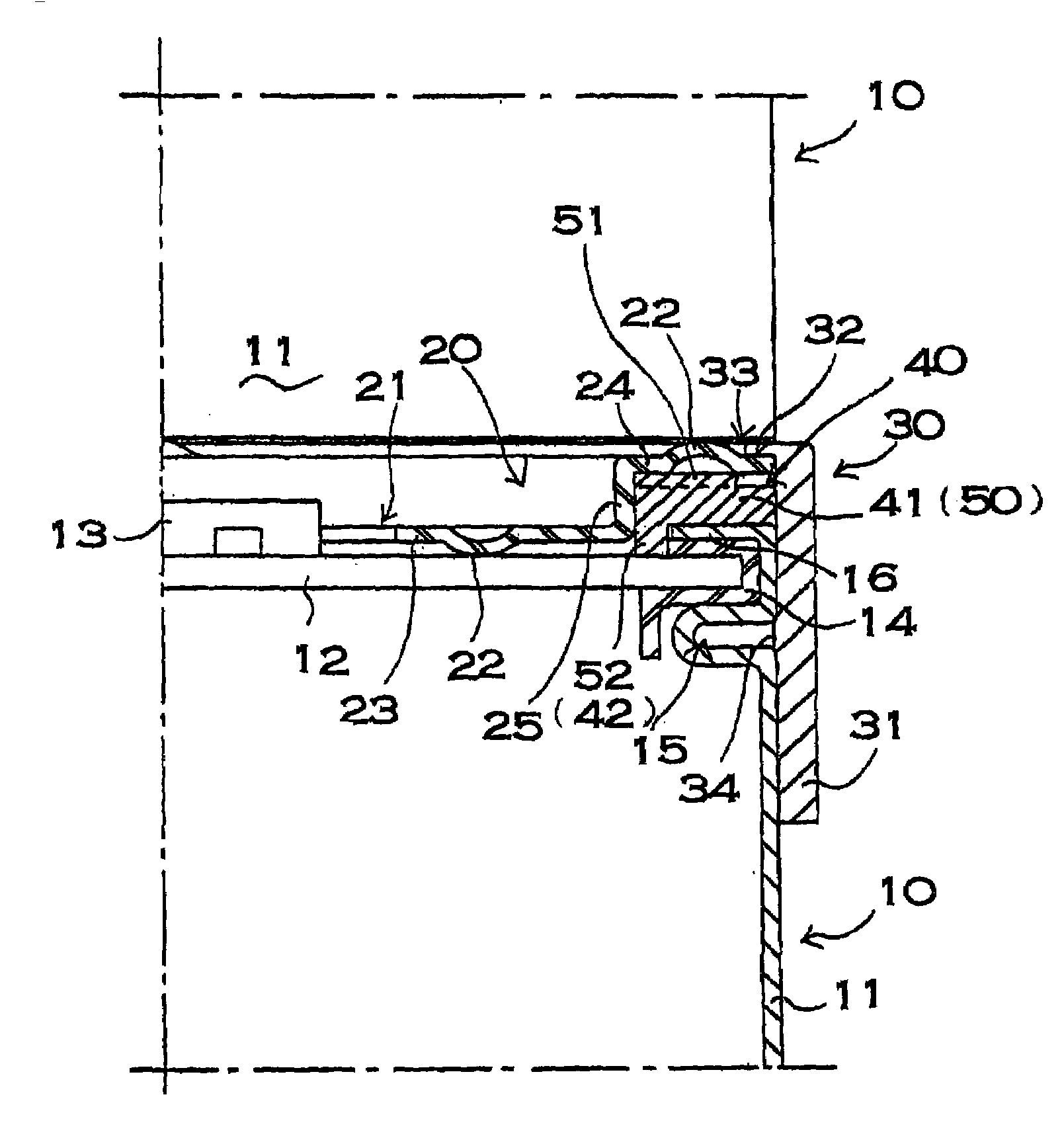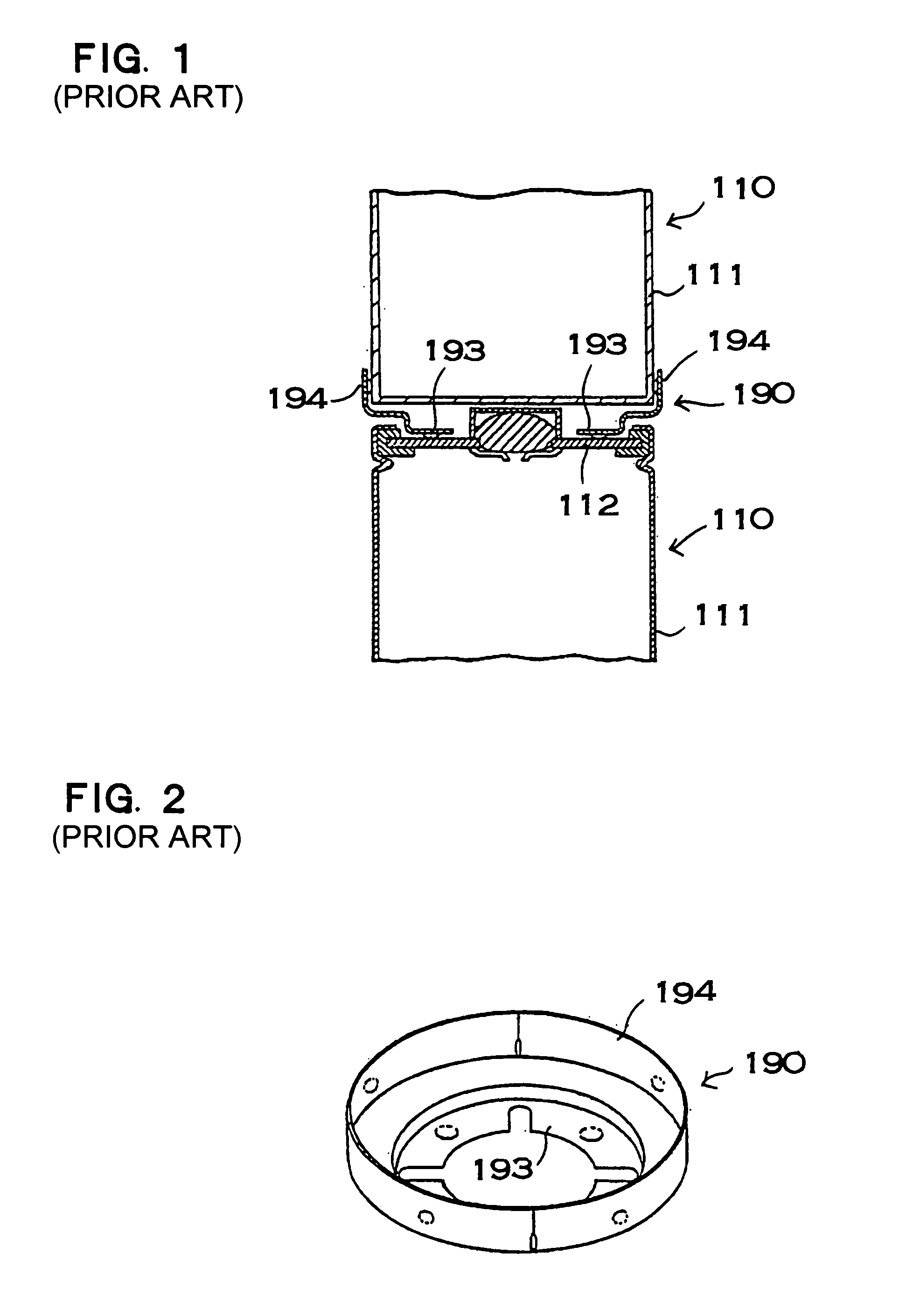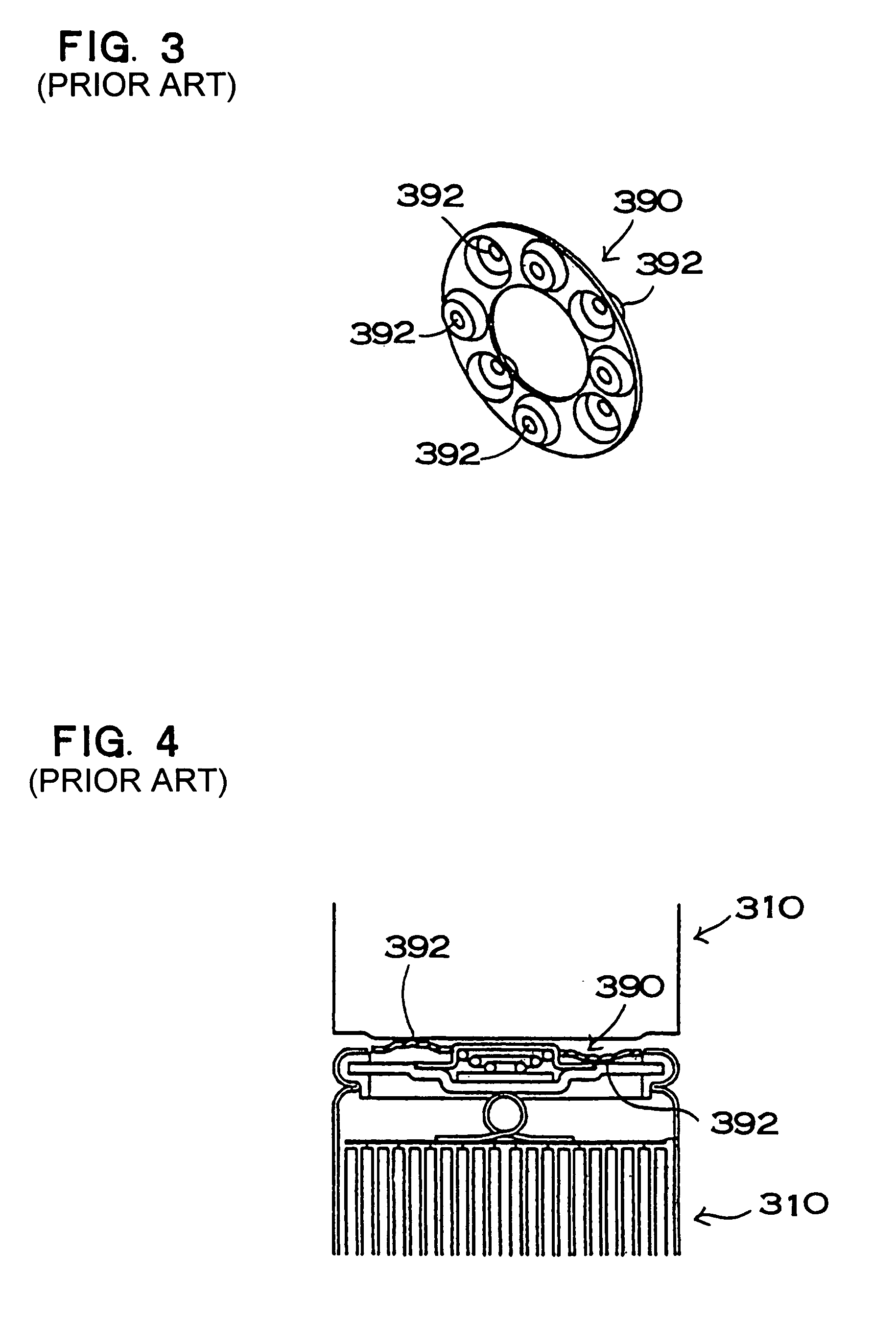Battery pack
- Summary
- Abstract
- Description
- Claims
- Application Information
AI Technical Summary
Benefits of technology
Problems solved by technology
Method used
Image
Examples
Embodiment Construction
[0027]A battery pack shown in FIG. 5 is composed of a plurality of series-connected and linearly interlocked secondary batteries 10. More than one battery pack of this structure is connected in series and chiefly used in a motor vehicle, such as a hybrid car. It should be appreciated, however, that the battery pack of the invention can be used in an application in which a large output is needed other than a motor vehicle. The battery pack shown in FIG. 5 is composed of series-connected and linearly interlocked secondary batteries of cylindrical batteries. It should be appreciated, however, that the battery pack may be composed of series-connected and linearly interlocked secondary batteries of prismatic batteries.
[0028]As shown in FIG. 6, the battery packs are aligned in parallel on the same flat plane and accommodated in a casing 70. The battery packs aligned crosswise are connected with one another in series and thereby raise an output voltage. Each battery pack is fixed to the ca...
PUM
 Login to View More
Login to View More Abstract
Description
Claims
Application Information
 Login to View More
Login to View More - R&D
- Intellectual Property
- Life Sciences
- Materials
- Tech Scout
- Unparalleled Data Quality
- Higher Quality Content
- 60% Fewer Hallucinations
Browse by: Latest US Patents, China's latest patents, Technical Efficacy Thesaurus, Application Domain, Technology Topic, Popular Technical Reports.
© 2025 PatSnap. All rights reserved.Legal|Privacy policy|Modern Slavery Act Transparency Statement|Sitemap|About US| Contact US: help@patsnap.com



